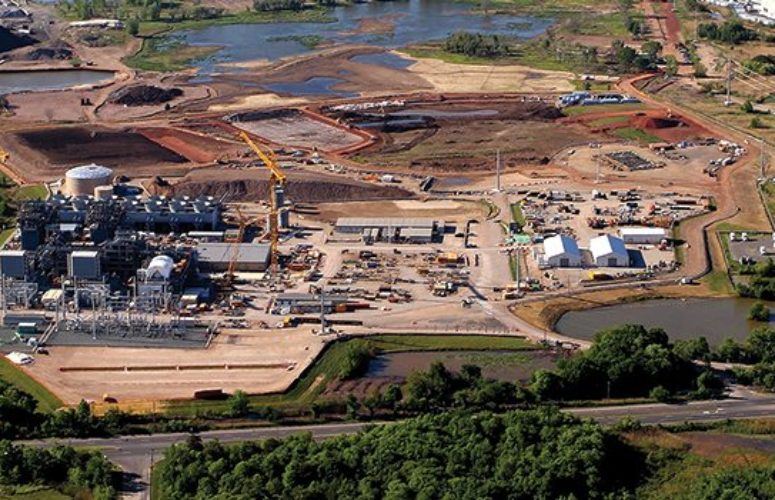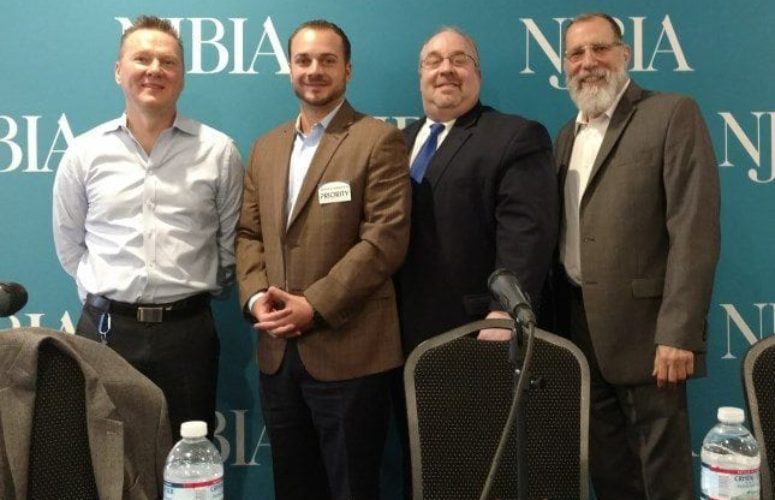
Fast-track Remediation and Redevelopment of Former Chemical Manufacturing Site
By Stephen A. Kessel, P.E., LSRP, Brown and Caldwell On Feb 26, 2016The former Nuodex site is a 185-acre parcel on the Raritan River in Woodbridge, New Jersey. A portion of the site (approximately 50 acres) was used for clay mining from the 1800s through early 1900s. Several chemical manufacturers then used the site until the mid-1980s. The other portion (approximately 135 acres) was historically undeveloped (including three ponds and 81 acres of jurisdictional wetlands) although highly impacted by historic releases, fill and disposal of contaminated dredge spoils.
Years of investigation led to the identification of over 40 areas of concern (AOCs) across the site, including environmentally sensitive areas (i.e., wetlands and pond sediments). Click here for definitions.
The impacts included multiple areas of dense non-aqueous phase liquids (DNAPL) in the subsurface, radiologically impacted soils, impacted sediments, two landfills, lead slag, pesticides in soil, and impacts associated with neighboring properties. Several attempts to remediate and redevelop the site through liability transfers and redevelopment-led remedial approaches were unsuccessful for various reasons. These include the failure to meet the remedial objectives, resistance from outside stakeholders, and financial drivers. In 2008, the responsible party assumed leadership in the development of a comprehensive remedial approach that has led to the successful remediation and redevelopment of the site.
In 2009, NJDEP, in cooperation with the Town of Woodbridge, established the Keasbey Brownfield Development Area (BDA), which includes the former Nuodex site and other nearby properties needing redevelopment.
In 2009, Brown and Caldwell implemented a fast-tracked program to meet several project goals – protecting human health and the environment, meeting remedial requirements and promoting redevelopment, which included restoration, preservation of green space and public access.
In 2010, the RAWP was submitted to NJDEP and included on-site containment of approximately 70 acres using a subsurface hydraulic barrier wall, groundwater extraction and treatment and soil cap, with limited excavation and off-site disposal of “hot spots,” requiring the filling and capping of ponds and wetlands. To compensate for the loss of these ecological resources, the remedial action also included ecological enhancement, restoration and preservation of approximately 100 acres of an open water pond feature, wetlands and enhanced uplands including an “eco park” for public access. The inclusion of the site within the BDA facilitated productive, timely input from the NJDEP, the U.S. Army Corp of Engineers (USACE), the Town of Woodbridge and other stakeholders, and expedited the design, permitting and approval of the remedial action. The RAWP was approved by the NJDEP in March of 2011; the primary NJDEP and USACE permits were received and remedial activities initiated in June and September of 2011.
In 2012, the responsible party opted into the Licensed Site Remediation Professional (LSRP) Program. The BDA designation combined with the LSRP Program greatly facilitated the remediation and redevelopment of this site. The advantages included:
- Significant decreases in the schedule to obtain required approvals.
- Expedited identification and acceptance of over 1 million tons of alternative fill and recycled material from multiple sources, enabling a cost-effective remedial action and redevelopment.
- Timely approvals for on-site containment.
- Expertise of stakeholder LSRPs and the LSRP of record allowed for efficient and effective coordination between developers and the responsible party.
In 2012, a 27.5-acre parcel of the site was sold for the construction of the Woodbridge Energy Center, an $845-million, 700-MW gas-fired power plant. In 2013, the soil remedial activities on the parcel were completed and a Response Action Outcome (RAO) for soil was issued by the LSRP. The property was transferred in 2013 after the issuance of a Soils Remedial Action Permit by the NJDEP. Construction began in 2013 and the plant went online in January of 2016. An agreement for the redevelopment of the remaining 7.5 acres available for redevelopment was signed in 2015 with redevelopment scheduled for completion in 2016. The ecological restoration of the remaining 100+ acres of the site is ongoing, including the creation of a 14-acre open water pond, 40 acres of wetland mitigation, 55 acres of upland enhancement, and close to two miles of public walking trails and boardwalks.
Participation in the BDA and LSRP programs facilitated the remedial action. This resulted in an expedited clean-up and redevelopment of this large and complex brownfield site, after decades of lying dormant. The redevelopment is now creating jobs, tax revenue and space for public recreation while enhancing and preserving ecological resources.
Related Articles:






